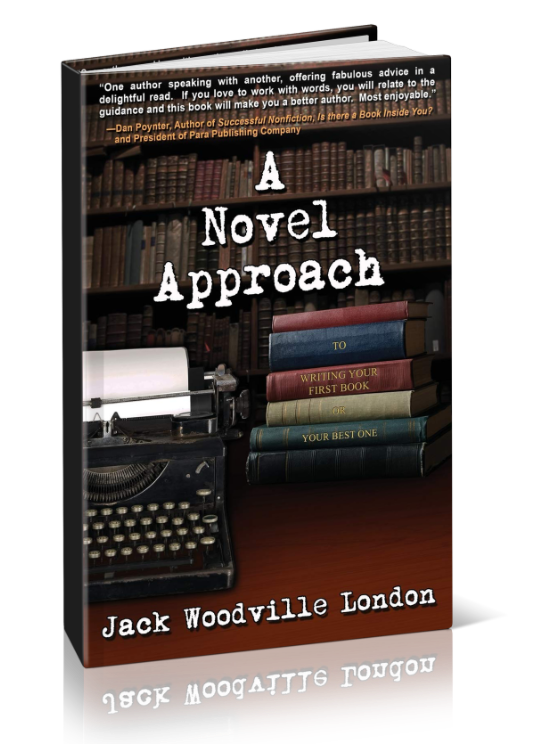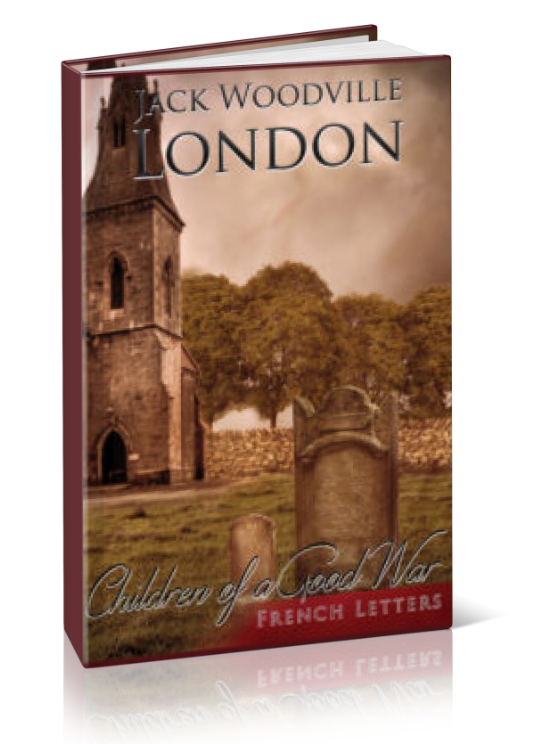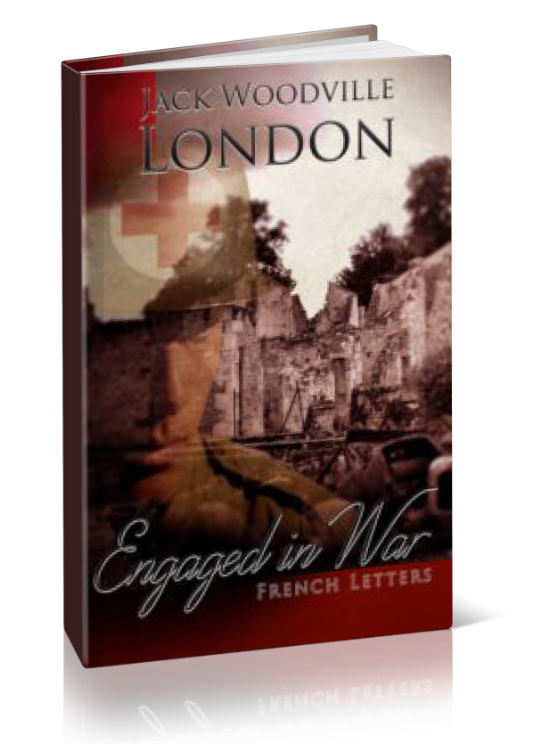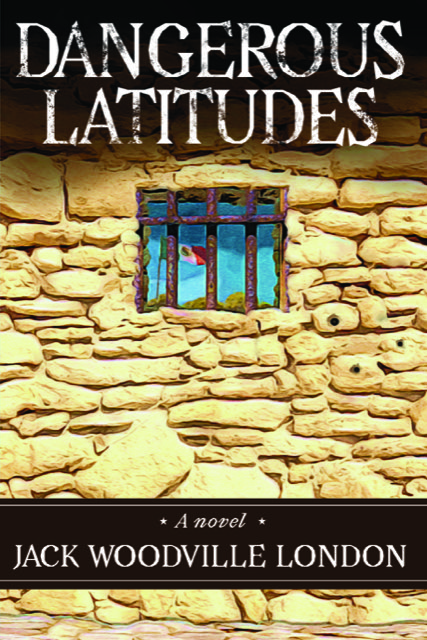French Letters Trilogy
Book 3 of 3: Children of a Good War
This book is a part of a series
Click to view others in the series.Some bombs lie buried for decades before they blow up and hurt someone. Now, forty years after World War II, one such bomb explodes in the form of a cache of faded wartime letters discovered in a cellar. Written from France by Dr. Will Hastings to Virginia Sullivan, they cause their supposed son, Frank, to understand that he really was a bastard. The discovery sends him on a quest to find out who he really is — and to uncover his family’s long-buried secrets.
Awards & Recognition
#1 Best Seller in War Fiction on Amazon Kindle
#8 in Historical Fiction on Amazon Kindle
Finalist for Best Novel of the South
2011 Honorable Mention – Fiction from the London Book Fair
Spent several weeks on the Austin American-Statesman bestseller list
Behind The Book
Behind the Book: Covetous Sibling Rivals, Claddagh Rings, Hijacked Airliners, and Identities That Even DNA Can't Discover Children of a Good War, set in 1985, is a novel of the hijacking of an airliner in the middle east, of a nun in Ireland who has taken the vows of silence for more than forty years, and of sibling rivals Peter, a Pan Am pilot, and Frank, a journalist. Their brotherly enmity equals the fiery feud between the Biblical Jacob and Esau, sons of blind Isaac and scheming Rebekah. Peter, in particular, believes that Frank is not his true brother but instead is a bastard who their father brought back from World War II France. Frank believes that first-born Peter always was given preference by Virginia, a doting mother who ignored Peter's cruelties at Frank's expense. The brothers take for granted the good material lives their parents, Will and Virginia, have provided for them in an America that itself takes for granted its worldly wealth after World War II. Then, tragedies strike and Frank is forced to set out on a journey to find his real mother and, in the process, find out who he is himself. Does anyone really know who anyone else is? Until 1985 only a very few scientists even knew of the existence of DNA. In 1985, Oxford-trained Professor Alec Jeffreys used the fingerprint of DNA minisatellites in human tissue, first to establish an indisputable parental relationship in a deportation case, then to use traces of semen from two murder-rape victims to establish both who their real killer was and to exonerate an innocent accused. He published his case study of DNA in "Positive Identification of an Immigration Test Case Using Human DNA Fingerprints" in the journal Nature, bringing to the public's attention that DNA identifies the biological uniqueness of each human scientifically and thereby can prove both who people are and who they are not. Jeffrey's work is the foundation of all modern forensic and personal genetic tracing. But, as for who someone is, even DNA can prove only so much. Fingerprints of a different kind also form part of the story behind the book, that is the fingerprints of the descendants of Jacob, ancestor of the nation of Israel, and his brother Esau, ancestor of the nation of Edom that is associated both with the area of Jordan-Arabah and with the Christian foundations of Rome. One such descendant of Edom, Abu Nidal, fiercely opposed the creation of Israel that directly flowed from Hitler's holocaust of Israel's descendants, the Jews. Nidal's Palestinian family had owned large orange groves near Jaffa until NATO partitioned Palestine and Israel which, in turn, stripped Abu Nidal's family of their farm. He proceeded to found a terror organization, the Abu Nidal Organization (ANO), that became infamous when in 1985 it conducted a machine gun attack on El Al counters at the Rome and Vienna airports, killing and wounding almost two hundred. His group went on to conduct hundreds of terrorist attacks, including the hijacking of Pan Am 73 in Karachi, Pakistan, and the murder of passengers on this and other flights. He helped organize the explosion of Pan Am 103 over Lockerbie, Scotland. Nidal died of gunshot wounds during interrogation by Saddam Hussein's intelligence agents in 2002. Behind the Book: Covetous Sibling Rivals, Claddagh Rings, Hijacked Airliners, and Identities That Even DNA Can't Discover Children of a Good War, set in 1985, is a novel of the hijacking of an airliner in the middle east, of a nun in Ireland who has taken the vows of silence for more than forty years, and of sibling rivals Peter, a Pan Am pilot, and Frank, a journalist. Their brotherly enmity equals the fiery feud between the Biblical Jacob and Esau, sons of blind Isaac and scheming Rebekah. Peter, in particular, believes that Frank is not his true brother but instead is a bastard who their father brought back from World War II France. Frank believes that first-born Peter always was given preference by Virginia, a doting mother who ignored Peter's cruelties at Frank's expense. The brothers take for granted the good material lives their parents, Will and Virginia, have provided for them in an America that itself takes for granted its worldly wealth after World War II. Then, tragedies strike and Frank is forced to set out on a journey to find his real mother and, in the process, find out who he is himself. Does anyone really know who anyone else is? Until 1985 only a very few scientists even knew of the existence of DNA. In 1985, Oxford-trained Professor Alec Jeffreys used the fingerprint of DNA minisatellites in human tissue, first to establish an indisputable parental relationship in a deportation case, then to use traces of semen from two murder-rape victims to establish both who their real killer was and to exonerate an innocent accused. He published his case study of DNA in "Positive Identification of an Immigration Test Case Using Human DNA Fingerprints" in the journal Nature, bringing to the public's attention that DNA identifies the biological uniqueness of each human scientifically and thereby can prove both who people are and who they are not. Jeffrey's work is the foundation of all modern forensic and personal genetic tracing. But, as for who someone is, even DNA can prove only so much. Fingerprints of a different kind also form part of the story behind the book, that is the fingerprints of the descendants of Jacob, ancestor of the nation of Israel, and his brother Esau, ancestor of the nation of Edom that is associated both with the area of Jordan-Arabah and with the Christian foundations of Rome. One such descendant of Edom, Abu Nidal, fiercely opposed the creation of Israel that directly flowed from Hitler's holocaust of Israel's descendants, the Jews. Nidal's Palestinian family had owned large orange groves near Jaffa until NATO partitioned Palestine and Israel which, in turn, stripped Abu Nidal's family of their farm. He proceeded to found a terror organization, the Abu Nidal Organization (ANO), that became infamous when in 1985 it conducted a machine gun attack on El Al counters at the Rome and Vienna airports, killing and wounding almost two hundred. His group went on to conduct hundreds of terrorist attacks, including the hijacking of Pan Am 73 in Karachi, Pakistan, and the murder of passengers on this and other flights. He helped organize the explosion of Pan Am 103 over Lockerbie, Scotland. Nidal died of gunshot wounds during interrogation by Saddam Hussein's intelligence agents in 2002. The Catholic Order of Poor Clares is the opposite of Nidal's middle eastern terrorism. One of the Clare's isolated convents is a religious oasis inside Galway, Ireland, where for almost four hundred years women have retreated to a holy life in the convent on Nun's Island, a contemplative community of Clares who originally came from France. Some of the nuns moved to Ireland after the destruction of their convent in St. Lô, France, during World War II. Two hundred yards south of Nun's Island, across the Corrib bridge, is the fishing village of Claddagh, built almost a thousand years ago on the shores of Galway Bay. For hundreds of years the men of Claddagh went out to sea in fragile boats and, too often in a brutish and dangerous world, did not come home. The Claddagh ring was first made by these same men and women who used fishing line to tie ingenious knots that produced two hands clasping and a heart in between. The rings were worn by lovers and by husbands and wives as symbols of an eternal bond that would survive even when, as so often did happen, the man perished at sea in a distant and lonely death. Sibling rivalry, DNA, terrorism, and the bonds of enduring love that survive both secrecy and death -these are the stories behind Children of a Good War.See more books

Shades of the Deep Blue Sea
As their ship crosses the Pacific, headed to war in the Philippines, the bumbling Olafson looks for ways to...
CONTINUE READING →
A Novel Approach: To Writing Your First Novel, or Your Best One
Characters. Conflict. Dialogue. Story arc. Editing. You can do this! In many respects it’s like building a home or...
CONTINUE READING →






